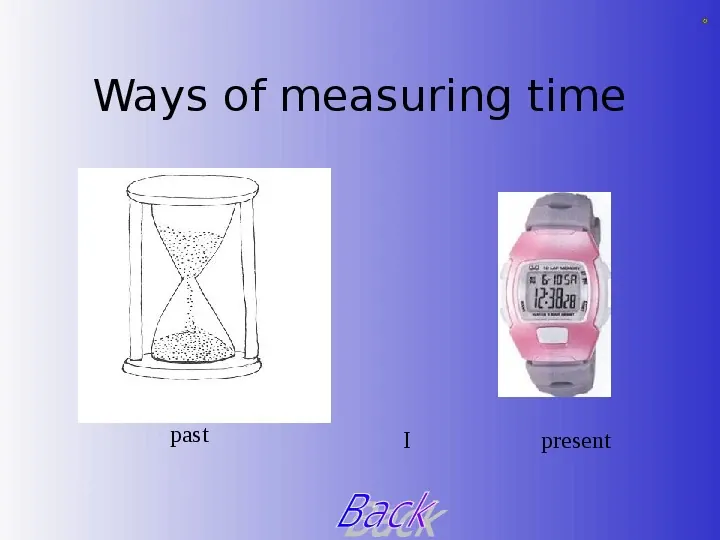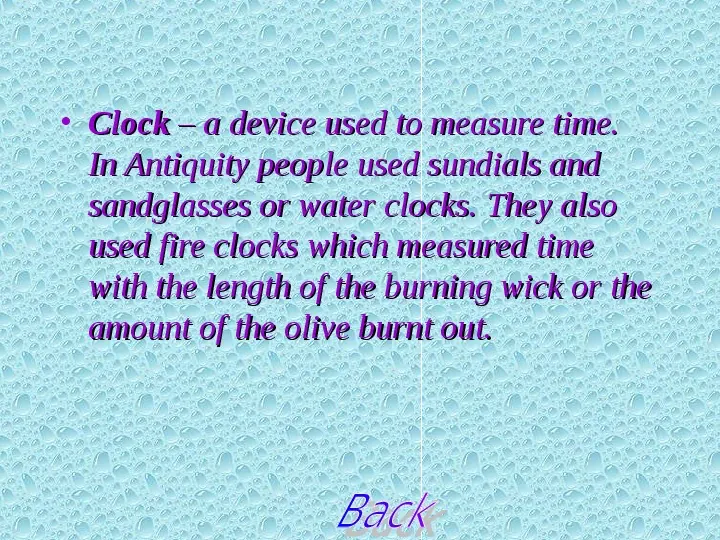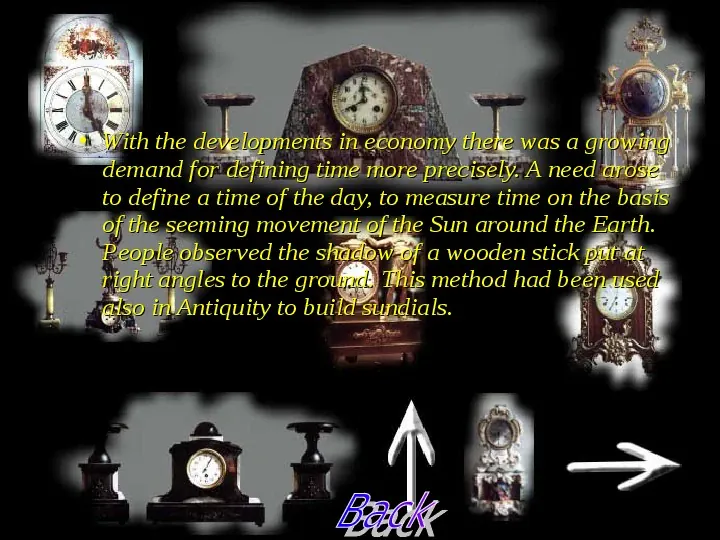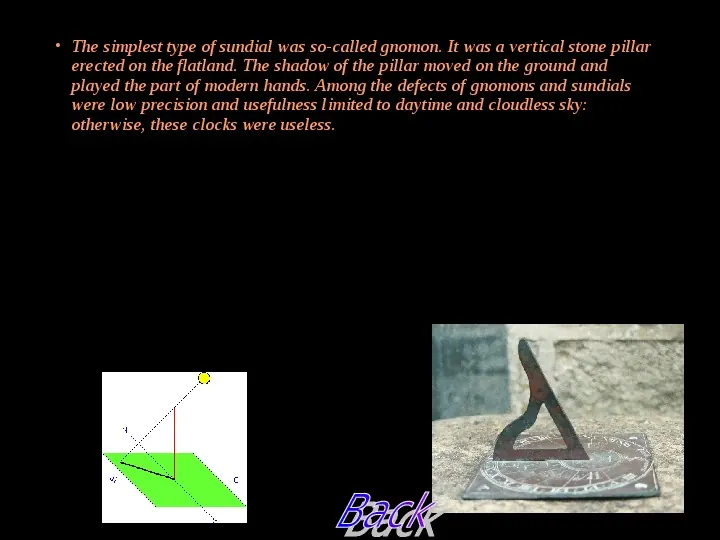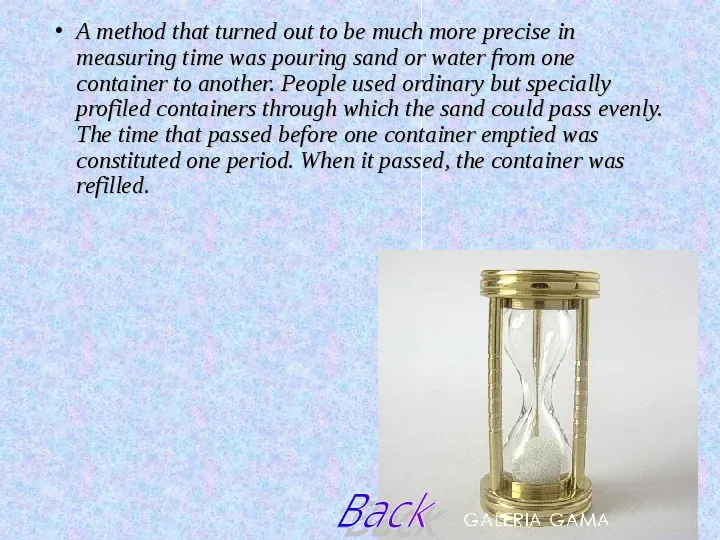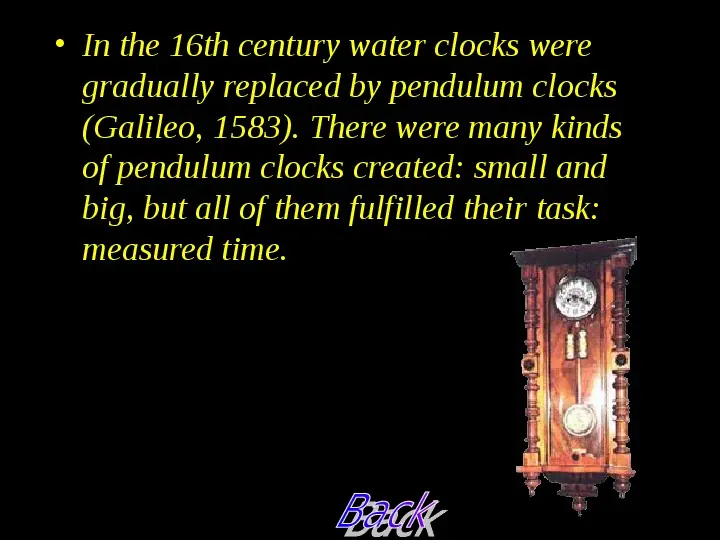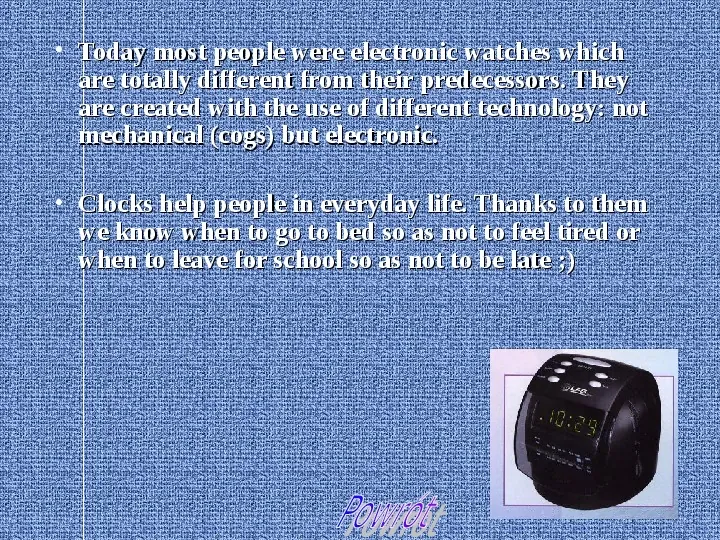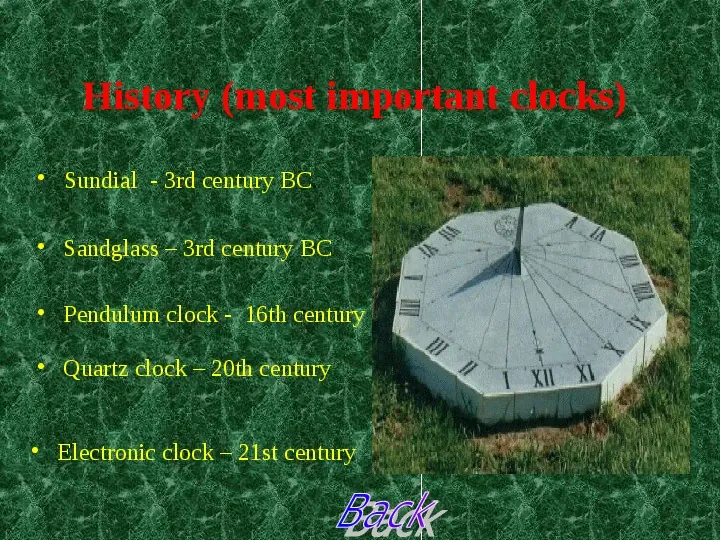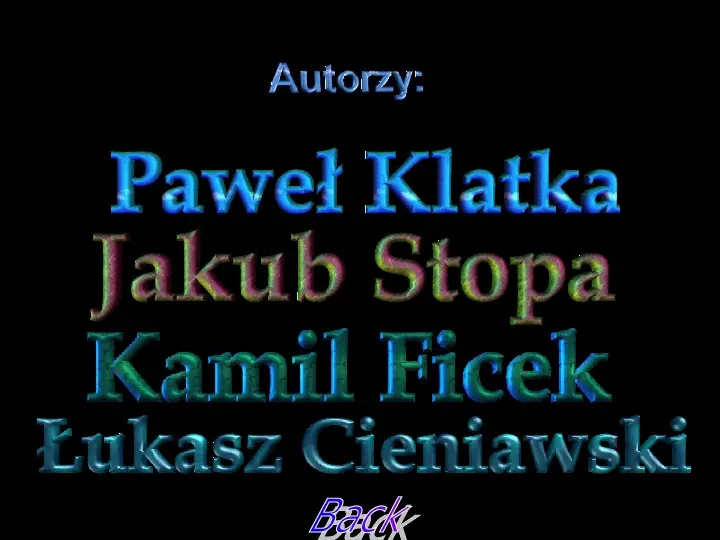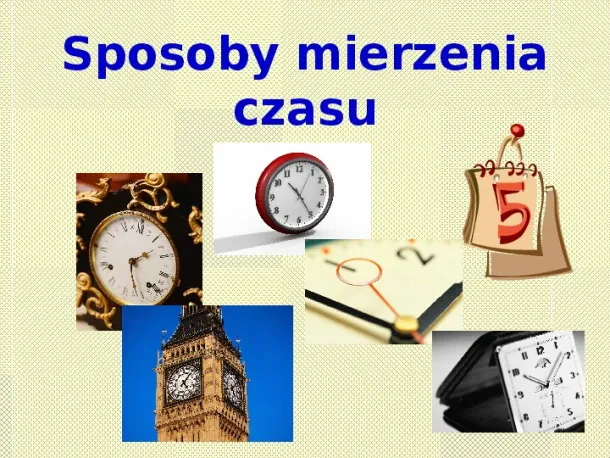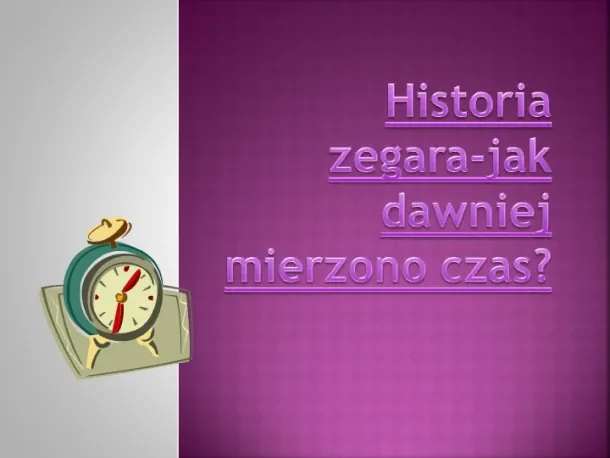Zobacz slidy
Treść prezentacji
Slide 1
Ways of measuring time past I present
Slide 2
Clock a device used to measure time. In Antiquity people used sundials and sandglasses or water clocks. They also used fire clocks which measured time with the length of the burning wick or the amount of the olive burnt out.
Slide 3
With the developments in economy there was a growing demand for defining time more precisely. A need arose to define a time of the day, to measure time on the basis of the seeming movement of the Sun around the Earth. People observed the shadow of a wooden stick put at right angles to the ground. This method had been used also in Antiquity to build sundials.
Slide 4
The simplest type of sundial was so-called gnomon. It was a vertical stone pillar erected on the flatland. The shadow of the pillar moved on the ground and played the part of modern hands. Among the defects of gnomons and sundials were low precision and usefulness limited to daytime and cloudless sky: otherwise, these clocks were useless.
Slide 5
A method that turned out to be much more precise in measuring time was pouring sand or water from one container to another. People used ordinary but specially profiled containers through which the sand could pass evenly. The time that passed before one container emptied was constituted one period. When it passed, the container was refilled.
Slide 6
In the 16th century water clocks were gradually replaced by pendulum clocks (Galileo, 1583). There were many kinds of pendulum clocks created: small and big, but all of them fulfilled their task: measured time.
Slide 7
Today most people were electronic watches which are totally different from their predecessors. They are created with the use of different technology: not mechanical (cogs) but electronic. Clocks help people in everyday life. Thanks to them we know when to go to bed so as not to feel tired or when to leave for school so as not to be late ;)
Slide 8
History (most important clocks) Sundial - 3rd century BC. Sandglass 3rd century BC Pendulum clock - 16th century Quartz clock 20th century Electronic clock 21st century
Dane:
- Liczba slajdów: 9
- Rozmiar: 6.43 MB
- Ilość pobrań: 157
- Ilość wyświetleń: 6372
